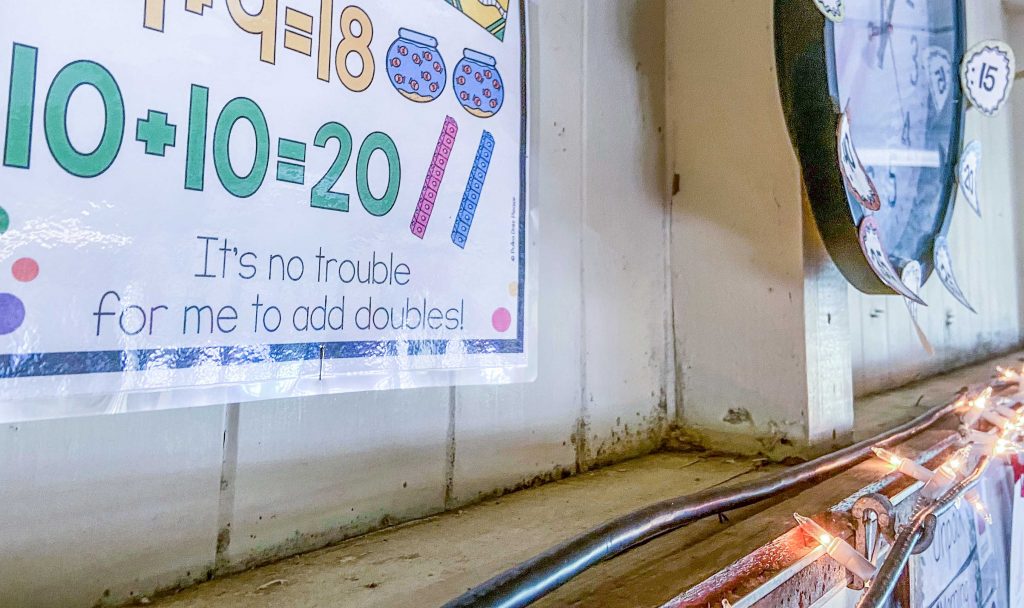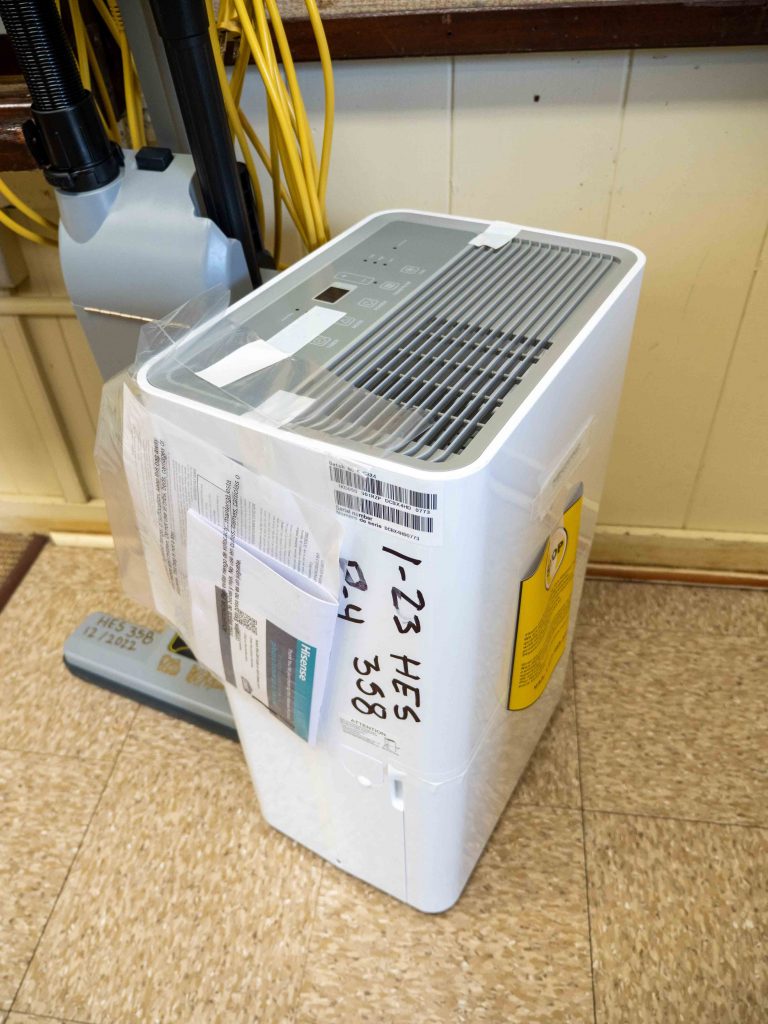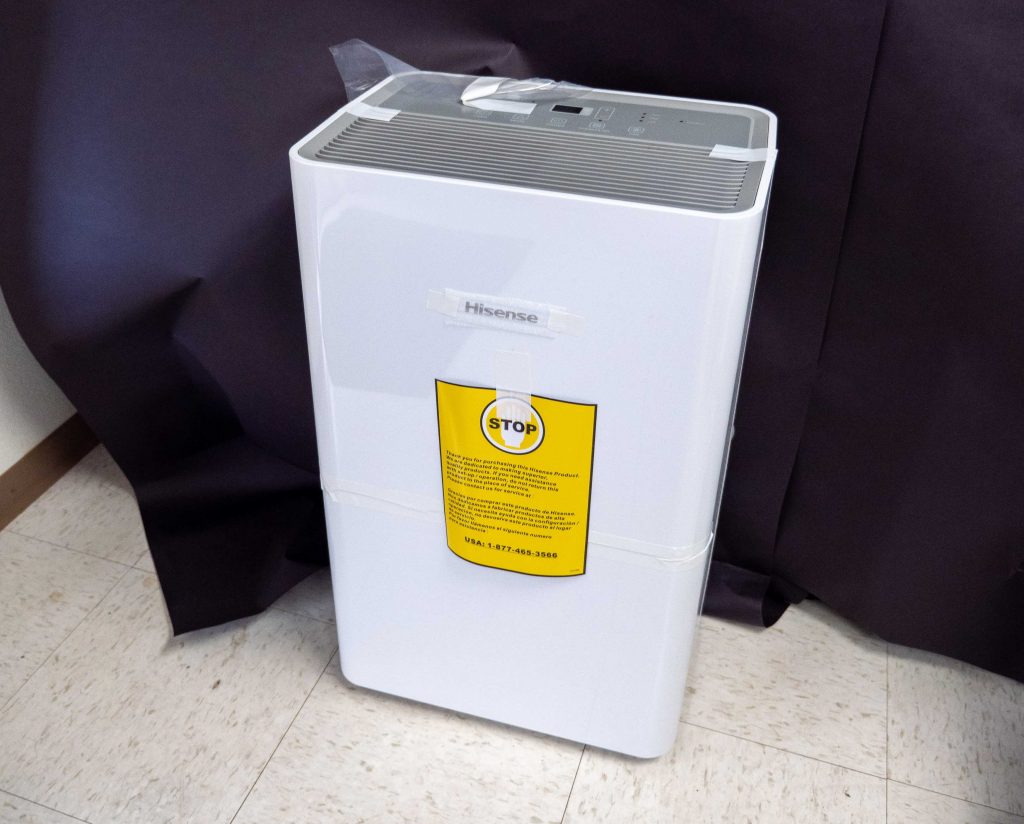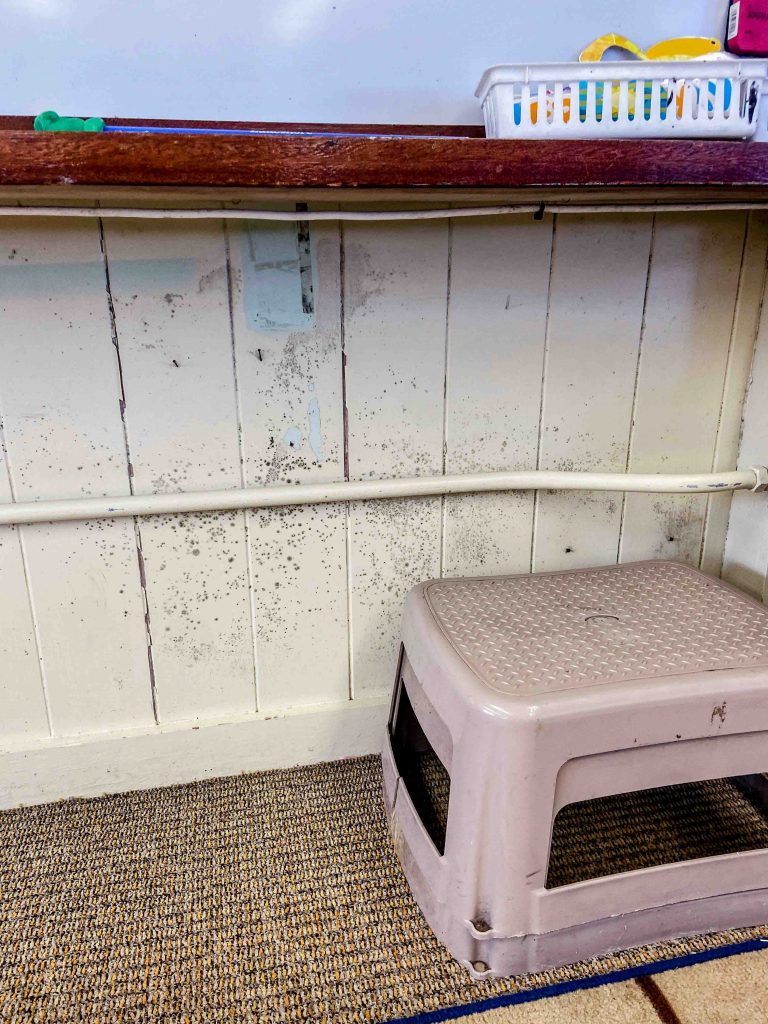Big Island elementary school ‘in crisis’ with mold, rats, structural damage

Hōlualoa Elementary School is under seige from unhealthy mold, pesky rats, wood eating termites, chipping lead paint and structure damage that is only getting worse with every earthquake.
With these problems dating back years, the Hawaiʻi State Teachers Association held a virtual press conference on Monday morning to create public awareness — and to press the state Department of Education to take action to make the school safe for students and teachers.
Logan Okita, vice president the teacher’s association, played a video that showed black mold everywhere on the walls and ceilings of Hōlualoa classrooms. There were pictures of dead rats in traps and rodent-chewed classroom materials covered in droppings.
In January, rats chewed through fiber cable wires, knocking out the internet and phone service. Rats also feasted on one teacher’s shoes she had left by her desk.
There’s also been concern about the structural integrity of the school’s main bathroom, which has cracks and broken concrete with exposed rebar.
The carpeting in some of the classrooms desperately needs to be replaced, with stains, tears that require duct tape to keep it together, and suspected mold underneath it.
But the biggest issue, Okita said, is the mold. It persists throughout the school despite custodial staff’s continuing efforts to clean it from the walls, floors and ceilings.
“We know there are problems statewide,” Okita said. “We’re having this [press conference] because Hōlualoa is in crisis. They’re in a situation that is more acute.”
Several staff members have tested positive for mold in their lungs and doctors have told them not to return to the school, classrooms or offices affected by mold. Teachers report students have high absentee rates because of respiratory problems.
“The state has continually failed to maintain the campus while underlying problems persist and get worse,” Okita said.
Sarah Teehee, a parent, member of the School Community Council and vice president of the Parent-Teacher Organization, said: “All of our classrooms on campus have one or more health or safety health risks. Whether it be mold, or 20-plus-year-old carpet over asbestos-containing flooring, termite damage, structural weak spots or more recently. lead-containing paint.”
While the Department of Education sent two letters to parents in January recognizing the problem of mold, there was no timeline given on when cleanings would be done.
“Efforts are in progress to initiate renovation of at least two portables that are currently vacant to increase classroom capacity while other classrooms are renovated,” said Nana Kalani, spokesperson for the department.
After receiving reports of poor indoor air quality and mold contamination, the Department of Education’s Environmental Services Unit conducted a mold assessment on Jan. 5.
“School custodians had cleaned prior to the visit so little mold was observed but school staff provided photos documenting mold in various classrooms,” Kalani said.
While samples from four classrooms verified the presence of spores from common species of mold that may affect those who have sensitivity and/or allergies, Kalani said there was no evidence of the more problematic black mold.
During a recent walk-through of the school by Gary Bagnami, the program specialist at the department of education, first-grade teacher Courtney D’Agostino recalled him saying that only a certain percentage of people with allergies are affected with the common species of mold.
D’Agostino, an educator for 22 years, and others dispute that claim. She said she has students with allergies and asthma suffering from the mold; and she has been severely impacted over the past six months.
“I’ve been in and out on medical leave,” she said. “I am not someone who suffers from allergies, nor do I have underlying health conditions … Mold is attacking my system.”
D’Agostino’s went on leave on Feb. 17 for her health. She not sure when she’ll be back.
She also is concerned about the heath of her first graders: “Keeping students safe is hard when we’re offered band-aid solutions.”
Okita said the school, which opened in 1895 and is one of the oldest in the state, needs to know there’s a plan in place to address all the health and safety issues.
Lisa Vail, the school’s services coordinator, said the school has submitted three master plans for repairs and new buildings to the State Legislature over the years that have never been funded.
Vail said the short-term solution is professional cleaning, yanking carpets and repainting. “The question is, who is going to do it?”
Vail said the long-term solution is: “We need a new school.”
But one thing is certain, according to the school’s teachers and parents: the band-aid solutions aren’t working. They continue to cause the disruption of learning, and are negatively affecting the children’s social and emotional health.
Two classrooms have recently been displaced. D’Agostino’s class was relocated into the school library because of pervasive mold.
“Sadly, the library has higher mold counts than my classroom and I know because I paid for it [testing],” D’Agostino said.
This relocation also means other students donʻt have access to the school library.
A third-grade classroom had to relocate to the stage in the cafeteria for weeks after lead paint started peeling and falling from the ceiling. They have since moved into a computer lab.
“Both of these environments are not ideal for learning,” said Jennifer Gillette, who has one kid in each of the displaced classrooms.
Gillette previously worked at the school as a teacher. She recalled the time she had to move her own classroom three times in half a semester because of structural issues with the facilities. She also wiped down the mold from her own classroom walls because nobody else was doing it: “The custodial staff can’t keep up with the mold. We need more services.”
In November, the school’s principal asked for a professional cleaning to eradicate mold, according to the teacher’s association. That cleaning hasn’t occurred and it is unclear when it will happen.
Okita said the state told teachers they plan to remove carpeting and repaint classrooms affected by mold. But the renovations will continue through the spring and summer breaks. While this is the current plan they’ve been told, teachers say the state has been promising to remove the carpet for the past three years.
The school just received dehumidifiers for every classroom. Okita said staff were instructed to close the windows every night, turn on the dehumidifiers, and then empty them out every morning before school.
Teehee said on Feb. 1 her son’s second-grade teacher found rat feces and urine in the classroom. That teacher complained to the administration about the conditions and the class was relocated to the cafeteria stage for three days.
Teehee also said her son suffered from a severe cough in October. The pediatrician said her son’s lungs were severely aggravated. He tested negative for COVID-19 and was given allergy medication, which he wasn’t able to take because it made him drowsy.
Despite all the problems, Teehee plans to start her daughter in kindergarten at Hōlualoa in the coming months. She said the teachers at the school have a lot of heart.
On Saturday morning, D’Agostino said Hōlualoa teachers and staff received a letter from Bagnami. It said: “Efforts are in progress to initiate renovations.”
“To me, this seems extremely ambiguous and I feel we deserve more,” D’Agostino said. “Our keiki deserve more, our families deserve more, our staff deserves more and our community deserves more.”
Sponsored Content
Comments






























